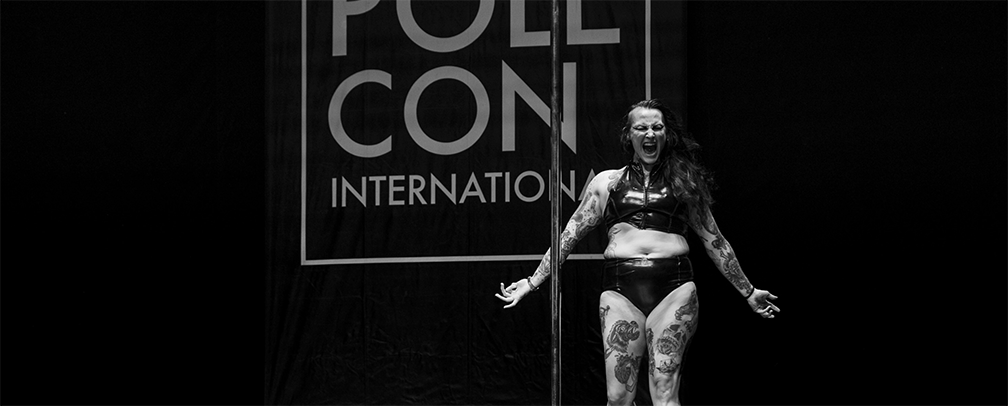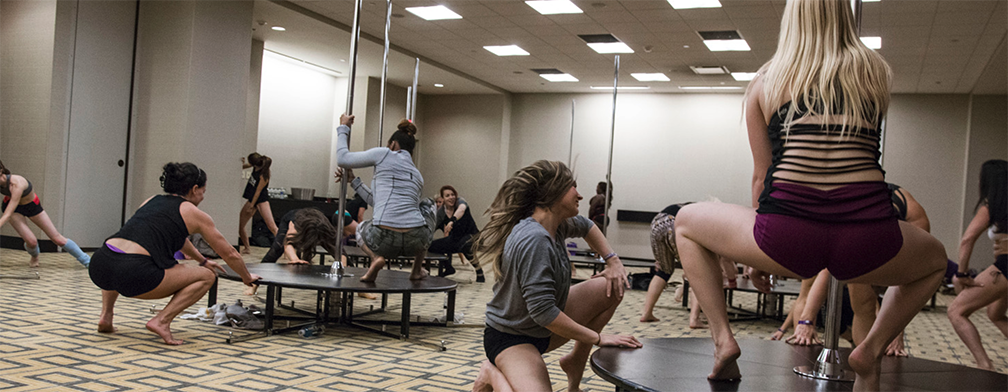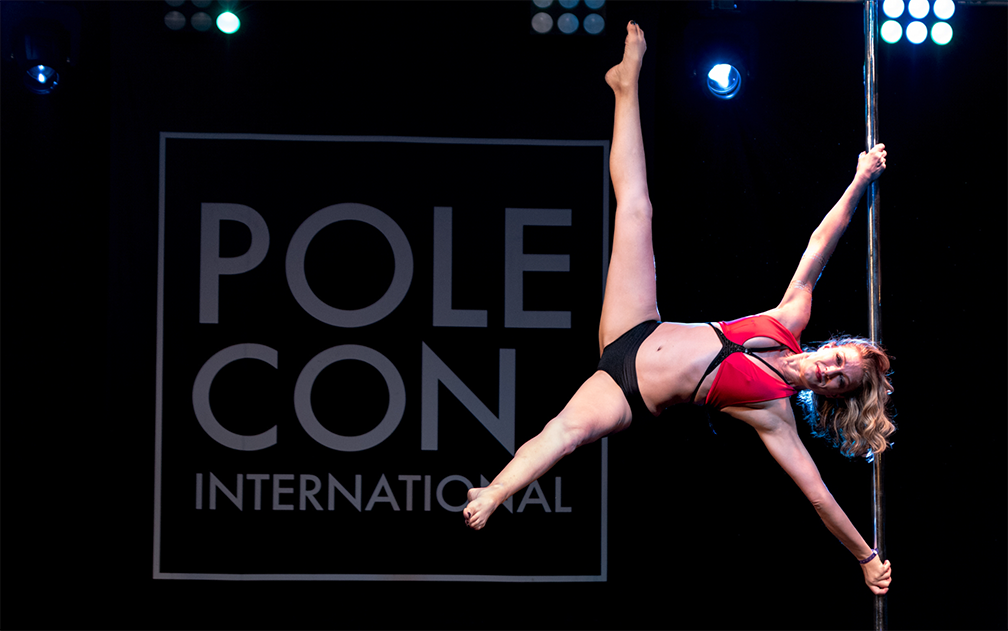Why is it that packing always seems easier and more fun in preparation for a…
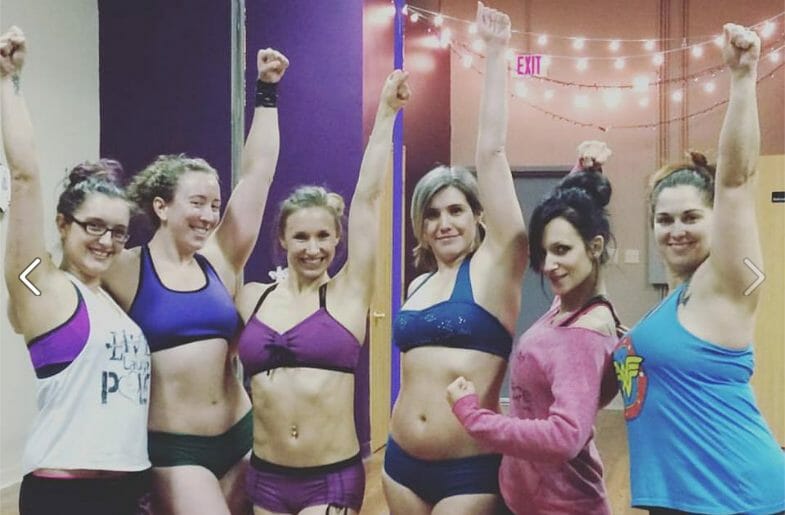
“OMG STOP DOING THAT, or things this instructor wants to hammer into your head (but realizes you have to figure it out for yourself)”
Disclaimer: Post is meant to be humorous and certainly not meant to be mean/rude/insulting to any instructors/students 🙂
(1) TRAIN. BOTH. SIDES. (and for the love of god, please keep working on the basics)
I cannot emphasize this enough. (I hope my shouting this at my computer screen came through!)
Training both sides is a habit that we, as polers, can quickly lose if it is not reinforced. We are naturally going to have a dominant side — that’s completely normal. Some moves are going to feel AMAZING on one side…. and HORRIFIC on the other.
There are moves that I know will just not work well on my non-dominant side – but we at least attempt them. And, most importantly, your “basics” should always be done on both sides – spins, basic inversions, etc. A recent Facebook post from Amy Kim spoke to a common issue in pole. In pursuit of trying new and crazier tricks, it is tempting to ignore the “basic,” “boring,” moves because they’re not “WOW! You’re holding on with a finger and some gum!”. DON’T. JUST DON’T.
(2) Build Good Habits Early.
(Now, this is assuming that you are teaching/have been taught good habits to begin with)
What are good pole habits?
Everything from being a few minutes early to class and remembering to remove jewelry and to clean your pole to not flinging yourself into inverts, proper engagement of your shoulders, and POINTING YOUR FLIPPING TOES. (One view of the “kicking into inverts” phenomenon can be found here now there are times where momentum is needed for a move, but I think something we can all agree on is that control of the move and the inversion are key for safety.)
While there are more names for moves that we can possibly keep track of, there are still enough commonalities that I think most instructors can agree on. My personal pet peeves (which my students are well aware of :)) include: climbing with the sole of your foot (note: unless you’re Chinese pole climbing, which is different) and lack of control in moves. Lack of control, for me, can mean anything from a massive kick into an invert to sloppy transitions.
The earlier you build good habits and continue with them, the better off (and safer!) you will be as you advance.
(3) Take Advantage of Workshops/Variety of Instruction!!
This can mean anything from taking a special workshop with a guest pole instructor/pole star to trying a class at your own studio with a different instructor to trying another regional studio!
I have been lucky enough to have taken workshops with some of my ultimate pole idols — and yes, they’re not cheap. But every single one has taught me something — new moves, new methods of instruction, new verbal cuing techniques that have made me a stronger poler and a stronger instructor. If it is within your budget PoleCon is just one example of an event where you can get a wide variety of workshops all in one location. Many other pole competitions will usually host workshops with judges as well, which can provide a fun opportunity for both competitors and spectators!
Pole Star Workshops are usually not cheap, particularly if they offer more than one — so what’s a student to do? Depending on the size of your studio, you probably have not taken classes with every instructor (and every instructor might not instruct your current level). Break out of your “instructor rut” — try a class with another instructor! We all have that one instructor that we love, and will take every class he or she offers — but who are we neglecting with that? The instructor that may have the key to getting the move you’ve been struggling with, or offer a different combination of moves. Other instructors may like dance-y combos more, or others may go with more strength tricks. Being a well-rounded pole student is something that any instructor should want for their “pole babies” — I know that I do! And an instructor who recognizes this should also recognize that they are not being personally slighted if a student expands their instructor base – be proud of your pole babies!
Similarly, if your area is fortunate to support multiple studios, try a class — you’ll expand not only your pole experiences, but your pole friends too!
(4) We all have nemesis moves.
Yes, even your baddass, fly-high instructor has moves that he or she JUST CANNOT FOR THE LIFE OF THEM GET. So we understand when there are moves that are just not happening. Sometimes it takes a while. Sometimes they may just not happen. Sometimes they may not happen consistently. (My personal one is janiero, I’ve gotten it a couple of times, but it’s still on my nemesis move list).
(5) YOU MAY NOT GET THIS MOVE THE FIRST TRY.
Or in the first class.
Or in the second class.
So stop pouting that you “can’t get this move” or “I don’t like it…” Rome wasn’t built in a day, and neither are most pole moves. Attempt, take a “day 1” video, let it marinate, and then keep working it – but not overworking it, because that leads to injury (i.e. stop doing twisted grip moves for 3+ hours at a time…. it’s not going to end well).
While Facebook and Instagram are fabulous in that moves spread like wildfire through the pole world, it can have the unfortunate effect of making us forget that these videos are often not the first attempt at a move — they may be the 100th attempt — so remember that not getting a move in the first class you try it is hardly a statement of failure!
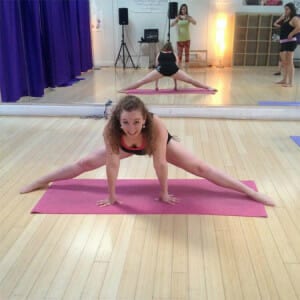
(6) I HAVE NOT ALWAYS BEEN FLEXIBLE – AND IT WILL NOT OCCUR OVERNIGHT
I have been tracking my flexibility progress for just over three years – flexibility is a slow, steady progression and will not always have quickly visible results.
HOWEVER, do not think that just stretching during your 1x/week pole class is going to yield major progress — it will yield some, depending on your starting point. But you’re going to have to do some outside work too! Everybody has different soft tissue and everybody has different bone structure. Explore different flexibility techniques and instruction and remember, flexibility is not an overnight journey, DON’T try to rush it.
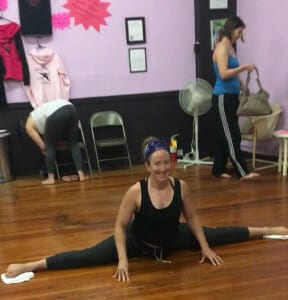
(7) And last, but CERTAINLY not least – the important of a PROPER warmup (and cooldown!)
Lord, I hope that shouting this at the computer screen came through 🙂
I honestly cannot emphasize this enough. What do I mean by a proper warmup? I mean not just taking 5 minutes and kind of halfheartedly stretching your shoulders and doing a few forward bends. I mean getting a little sweaty, making sure your muscles are warm and FULLY warming up the muscles you intend to use for class or your training session. This may depend on the moves you plan to work on, especially as you move up in levels. If you plan to do flying body/dis-locator/reverse grab/phoenix work, then you better do a full warmup of your shoulders, working through range of motion, strength and stretch. Not everyone is going to warm up the same — that’s perfectly ok — but you’re not doing your body any favors by prematurely jumping into the move.
A cool down.
Yes, really. Take 5-10 minutes. Relax. Slowly go through some static stretches. This is important to signal to your body that you’ve completed your activity and it can move into recovery mode. This may have to occur after your actual class time is completed — take responsibility for your body and athletic journey!
Latest posts by Lindsey Love (see all)
- “OMG STOP DOING THAT, or things this instructor wants to hammer into your head (but realizes you have to figure it out for yourself)” - November 25, 2016
- “Shake it off”: How to Start Incorporating Dance into Your Pole Class - January 1, 2016
- What Happens When Your Routine Gets Messed Up… er REVAMPED—Part 2 - October 30, 2015
